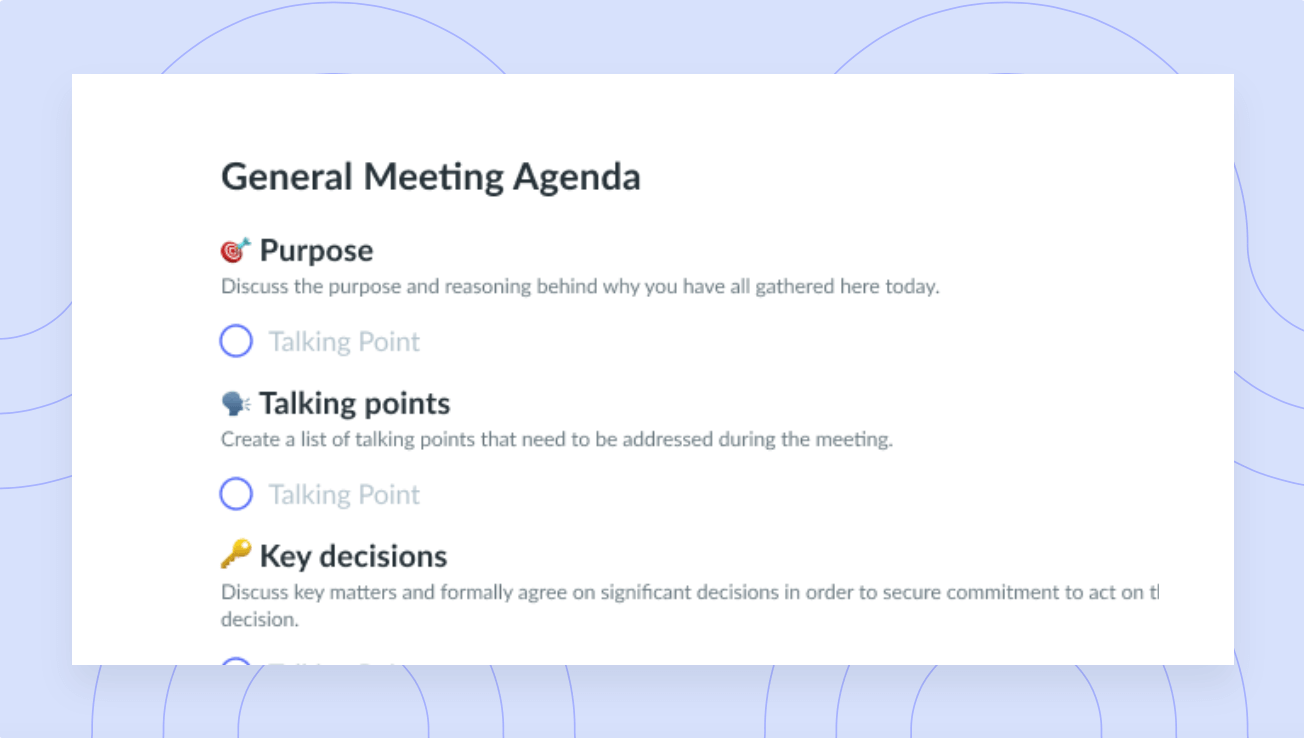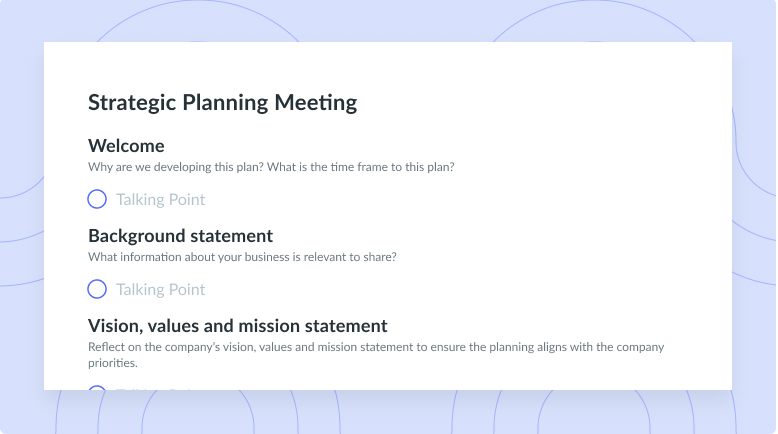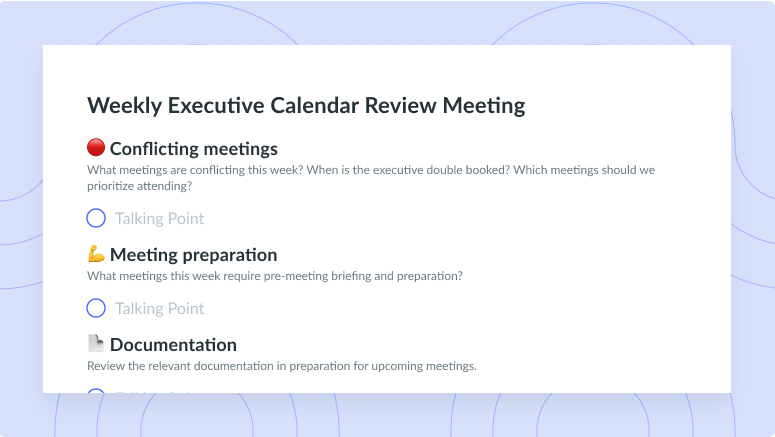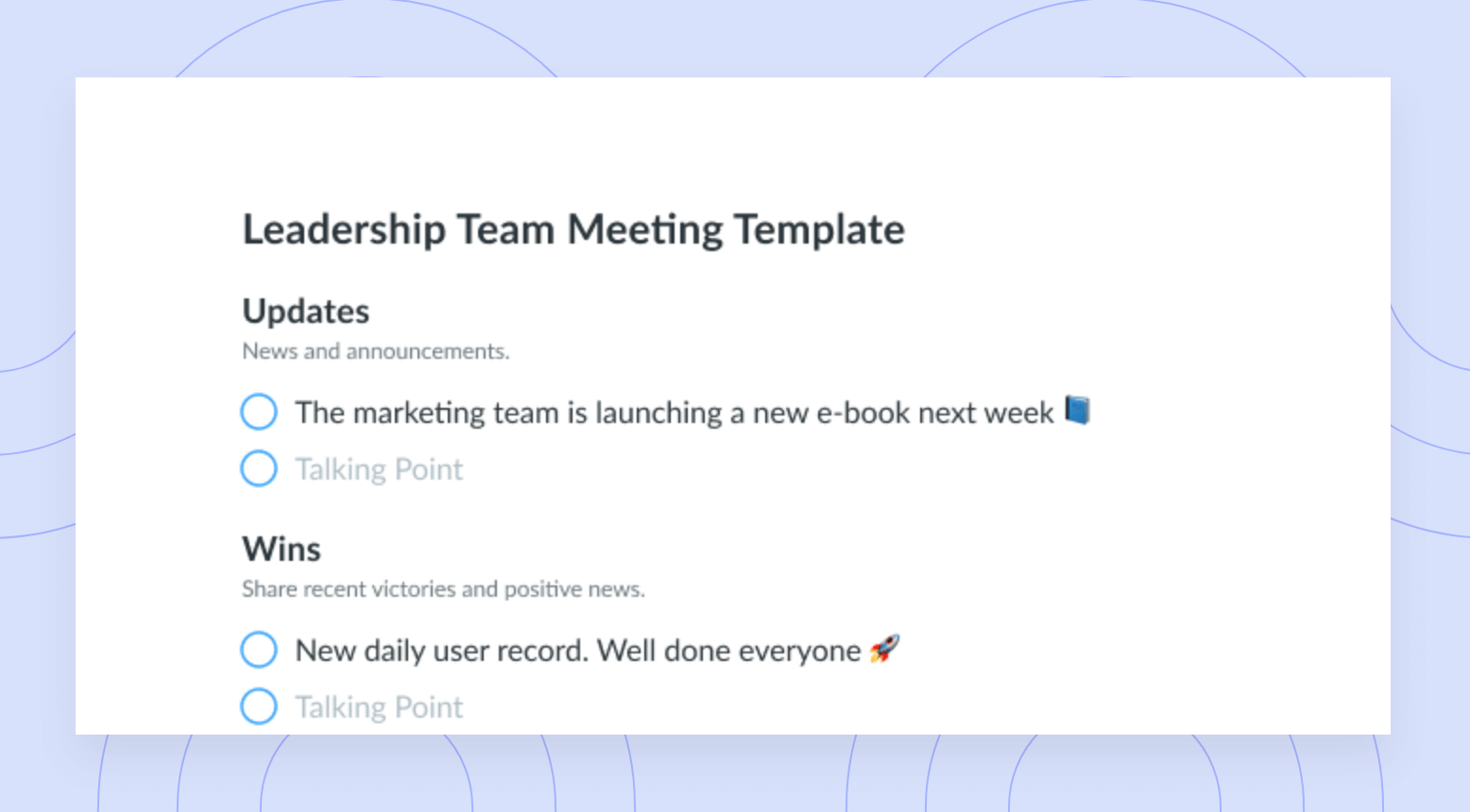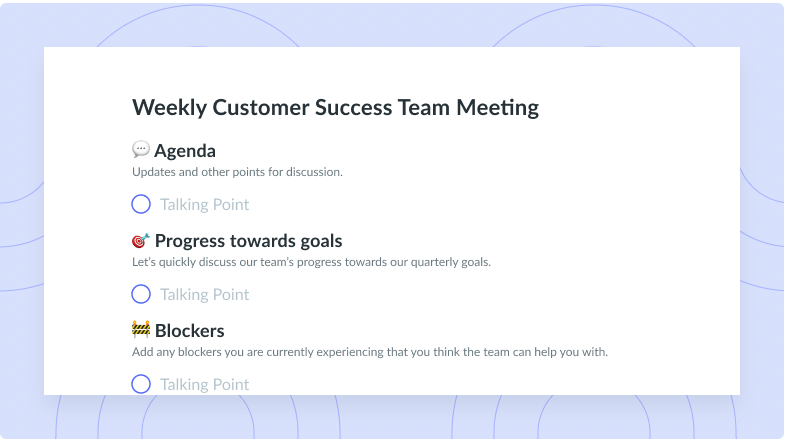The War Room: What It Is and How to Use It (+ Example)
See how business leaders and employees can use war room meetings to communicate effectively and resolve major issues quickly.
When you hear the term “war room,” you likely think of the military. What if we told you that war room meetings can be used to help teams in fields like marketing, project management, and software engineering solve problems, boost collaboration, and make decision making better for everyone?
Today, let’s explore war room meetings and what they are, take a look at the benefits of hosting them, and view six best practices you can use to reach your desired objectives.
- What is a war room meeting?
- Benefits of a war room meeting
- 6 war room meeting best practices
- Example: Google Ventures and the ideal war room
What is a war room meeting?
The concept of the “war room” has been used in business for many years. It was introduced during WW1 and WW2 when leaders in the military needed time to discuss their defense strategies. The most well-known war room was used by Winston Churchill during WW2. Since then, managers across fields have used the term to describe meetings where crises are dealt with and great ideas are sparked.
The difference between a war room meeting and a regular meeting is that a war room meeting is meant to inspire creative debate rather than business debate. The war room is where employees and other stakeholders can gather to work through a major incident as quickly and efficiently as possible.

Run efficient meetings, come to a decision, and get back to work
Level up your meeting habits to boost engagement and productivity with a collaborative meeting agenda. Try a tool like Fellow!

Benefits of a war room meeting
- Fosters effective communication
- Limits distractions
- Keeps stakeholders informed
- Allows you to quickly adapt
- Builds a shared understanding
1Fosters effective communication
One benefit of hosting a war room meeting is that it encourages employees and leaders to communicate directly about pressing matters. Practicing good communication will boost employee morale, engagement, and productivity. If your war room meeting is effective, each attendee should be able to see and hear everything being discussed at all times. Each piece of information must be conveyed clearly so that the group can brainstorm solutions and take action quickly.
2Limits distractions
While normal meetings and work sessions can be interrupted by colleagues and other projects, the war room meeting style is meant to minimize other distractions. During war room meetings, attendees may be asked to silence notifications, turn off devices, and put on headphones if the meeting is virtual. When a major incident occurs at work, employees should have a dedicated space to work through issues without everyday disturbances.
3Keeps stakeholders informed
Keeping stakeholders in the loop can be a challenge but is essential to the success of team and company initiatives. In difficult situations, it’s crucial to have an accurate picture of what’s happening so that employees and stakeholders can make the right decisions. War room meetings can keep stakeholders informed by including them in key discussions that affect the company. Ideally, you should meet with stakeholders on a recurring basis to show that your team is accessible. War room meetings are especially good opportunities to give stakeholders a good sense of what issues affect the company and its overall performance.
4Allows you to quickly adapt
Adaptability is an important but often overlooked skill for teams. Adaptable teams can keep up with shifting priorities, projects, clients, and technology. War room meetings allow teams to get ahead of difficult and changing circumstances. During war room meetings, teams are asked to innovate and develop effective solutions to pressing issues. The structure of a war room meeting should encourage the group to work fast, think on their feet, and develop a plan to move forward. War room meetings can also help the group comfortably adapt to new ideas, responsibilities, processes, and strategies for the future.
5Builds a shared understanding
Shared understanding happens when each member of a team’s knowledge is aligned. War room meetings force employees to be looped in on a tactical level and stay connected as circumstances change and work progresses. During a war room meeting, each attendee should understand what the group is aiming to achieve, how the strategy being developed will give the group its best chance at success, and what each person’s role will be in executing the plan.
6 war room meeting best practices
- Use a meeting tool
- Only invite the necessary people
- Assign meeting roles and responsibilities
- Establish communication expectations
- Assign a point of contact
- Ensure the room has lots of space
1Use a meeting tool
The right digital tool can make all the difference. A great meeting tool can help teams facilitate, enhance, and execute digital processes. They can give meetings structure so you and your colleagues can spend less time going back and forth and more time working through tasks and delegating action items.
Our suggestion is to use Fellow as your one-stop shop for all things related to meetings, feedback, and decision making. Leverage our collaborative meeting agendas to document ideas and transform your war room meetings into productive work sessions everyone wants to attend. You can also use Fellow to structure your meetings in advance so you can spend meeting time solving problems. Our 500+ ready-to-use meeting agenda templates make it easy to get started!
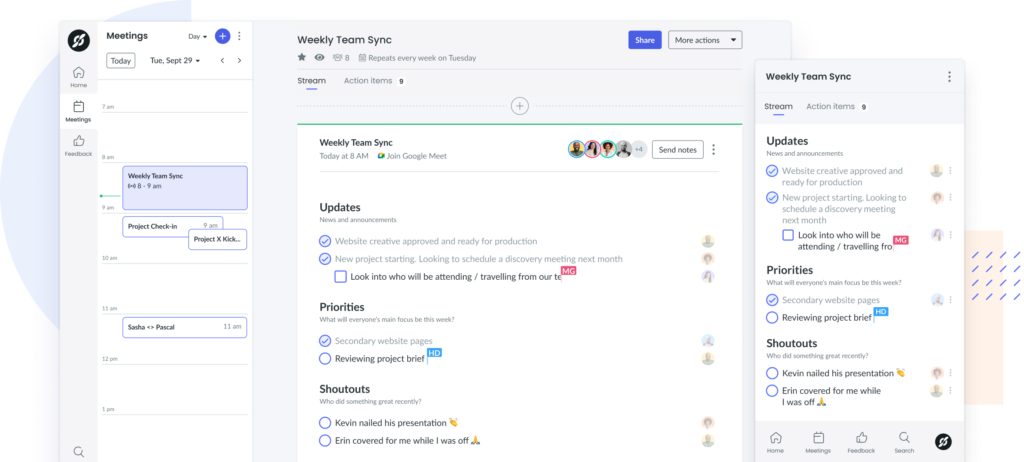
2Only invite the necessary people
A good rule of thumb is that no meeting should include more than eight people if the objective is to solve problems or make a decision. Keep your war room meetings small so that everyone has an opportunity to fully participate, ask questions, and contribute to the solution. Before you send a meeting invitation, determine who will be directly affected by the topics discussed and decisions made. Consider the skills, experience, and interests of individuals when deciding who must attend.
3Assign meeting roles and responsibilities
Assigning meeting roles can make your war room meetings inclusive, collaborative, and effective, especially amidst a company crisis. Establish who owns what from the beginning, and assign clear roles and responsibilities such as the organizer, host, note-taker, decision maker, voice of the customer, optional attendees, and informed participants.
4Establish communication expectations
Communicating expectations can help employees understand what they should strive to achieve and, in turn, can reduce confusion during meetings. Set expectations for employee communication during war room meetings so you can swiftly move through agenda topics without getting sidetracked. Before the meeting, outline your expectations in an email and explain the importance of the meeting. When employees understand their roles, they will feel motivated to bring their best selves to the war room. Provide any resources that will be helpful for attendees to prepare in advance.
5Assign a point of contact
A point of contact for a war room meeting is an individual who can provide other attendees with information before, during, and after each session. When the meeting ends, the point of contact is the person to whom attendees can reach out with questions and for up-to-date information. The point of contact may also be responsible for sending meeting minutes, checking in with attendees on their action items, and reporting updates back to other employees and company leadership.
6Ensure the room has lots of space
Most war room meetings are in person, so the physical space in which you host them matters. The room should always have enough space for writing, ideally on chalkboards or whiteboards, which can act as the focal point of the meeting. The war room meeting area should have plenty of space for attendees to move around and bounce ideas off of one another. Your war room should also be the ideal environment for employees to put their heads together to achieve a larger objective. Attendees should never feel constrained by the actual physical space.
If your war room meeting is remote, there are ways to optimize your digital space. Use our collaborative meeting agenda tool to allow everyone to add talking points, collaborate on meeting notes, record action items, and send meeting notes before the meeting starts and once it ends.
Example: Google Ventures and the ideal war room
If you’re still not sure what the ideal war room meeting setup looks like, look no further than the war room at Google Ventures. Jake Knapp, New York Times bestselling author of Sprint, explains in a blog post on Medium how teams can create a meeting culture that helps companies make major decisions.
At Google Ventures, employees use war rooms to build shared understanding, solve complex design problems, and manipulate ideas physically via whiteboards, agile trackers, and sticky notes. Each aspect of the physical space empowers teams to take their ideas to the next level. During a Google Ventures design sprint in the war room, there are many items on the walls at any given time: notes, diagrams, sketches of possible solutions, storyboards, and more. Teams also use spaces with floor-to-ceiling whiteboards, windows, and empty walls.
Parting advice
War room meetings are for more than just military leaders. Teams can use them as a tool to solve complex challenges, adapt to change, and move new projects forward. The next time you have an urgent matter that calls for a meeting, clear out the large table in your office boardroom, add a whiteboard or two, and make space for collaborative problem solving. Treat your business challenges like creative debates and watch your team develop new and innovative solutions!








![How to Apologize Professionally In an Email [+ Templates]](https://fellow.app/wp-content/uploads/2022/06/How-to-Apologize-In-an-Email-2.jpg)

